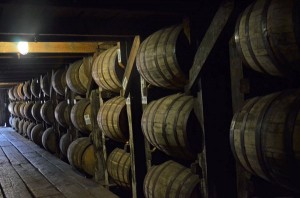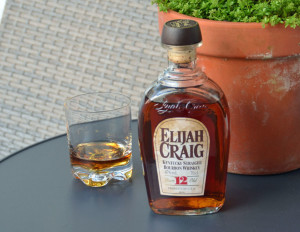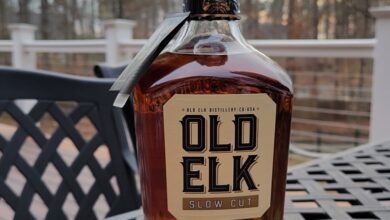Bourbon Stocks At Record Level, And That May Be A Problem
Looking Back To The 1970s Prompts Both Caution And Enthusiasm
By Richard Thomas

(Credit: Joana Thomas)
Last week the mainstream media was abuzz with stories that bourbon stocks in Kentucky were approaching the 1975 high water mark of a stock of 5.8 million barrels. According to the Kentucky Distillers Association (KDA), the end of 2014 saw 5.7 million barrels in inventory, so in all likelihood today’s stocks have already surpassed 1975 levels. Also, 1.3 million barrels were filled in 2014, the most since 1970 and third year running that over one million barrels were filled.
Fears Drowning In Whiskey
Yet in that reference to the 1970s is a cause for serious concern among those with long memories, especially at the big distilleries, the “Kentucky majors.” By the mid-1970s, Irish whiskey, Scotch whisky and bourbon whiskey all began what would become a severe and protracted sales slump, one that is generally thought to have lasted for two decades.
KDA President Eric Gregory called this the “golden age of bourbon,” and rightly so, but many in the industry are still looking nervously over their shoulders, fearful of being left with a lake of whiskey no one wants. Misgivings are so widespread that I can’t have a conversation about the bourbon boom with someone from the Kentucky majors without idea of a modern parallel to the 1970s slump coming up. Within the bourbon industry, “whiskeygeddon” means a shortage of customers rather than whiskey to sell to them.

(Credit: Richard Thomas)
From Boom To Bust To Boom
The irony of all this is how that 1970s whiskey bust and the lakes of whiskey around the world that it left in its wake created the conditions for today’s modern boom. Taking just bourbon, the mid-1980s saw the emergence of the small batch and single barrel concepts in the form of Elijah Craig 12 Year Old and Blanton’s. Jim Beam followed suit with their Small Batch Collection, started in 1987 when Booker Noe introduced his namesake label Booker’s. Willett built itself up in large part by bottling the well-aged excess stock of the major distilleries.
All that high quality, reasonably priced bourbon was what drew in the customers that became the bedrock of the modern bourbon boom. If the 1970s bust hadn’t left those lakes of whiskey sitting in the warehouses, the current golden age might not have come about.
Golden Age Or Precipice?
I think Gregory is right in calling this the golden age of bourbon, because I do not believe the boom is close to reaching its crest yet. Just as a generational shift took drinking tastes away from whiskey in the 1970s, so the pendulum has swung back in the other direction. The major difference is that the population of the home market of the United States alone has risen by roughly a third in the interim. Keeping that in mind, clearly the bourbon boom has some more booming left in it.
If the boom times end, that end should come only well after production, stocks and demand all surpass previous peak levels, and by a wide margin. Even then, the end of the boom might come more in the form of a hiccup and leveling off rather than a crash. After all, whiskey was essentially replaced by wine and vodka between the 1970s and 1990s, and neither of those drinks has seen a major collapse.



Excellent observations. This new whiskey ocean is the industry’s response to the current mania which is causing shortage of top quality aged stocks. But it will be years before all this new spirit is aged to the level that the current mania – which is heavily biased in favor of extra-aged super-premium offerings – demands. The real question is whether all this new whiskey is ready before the cultural Zeitgeist moves on. At what point will budding whiskey enthusiasts get turned off by a market where top quality stuff is unobtainable on store shelves (having been gobbled up by flippers, speculators, and hoarders). Will this happen before this new whiskey ocean is ready to slake their newly voracious demand?